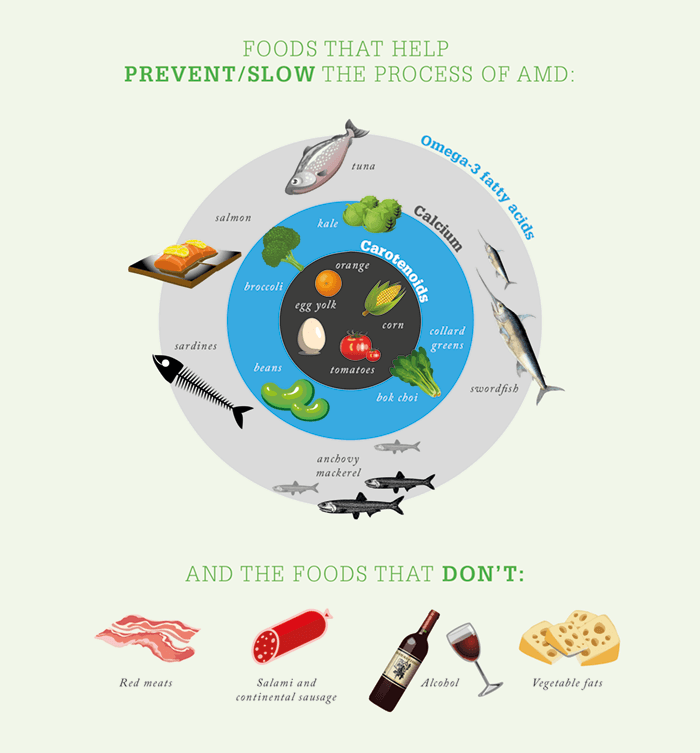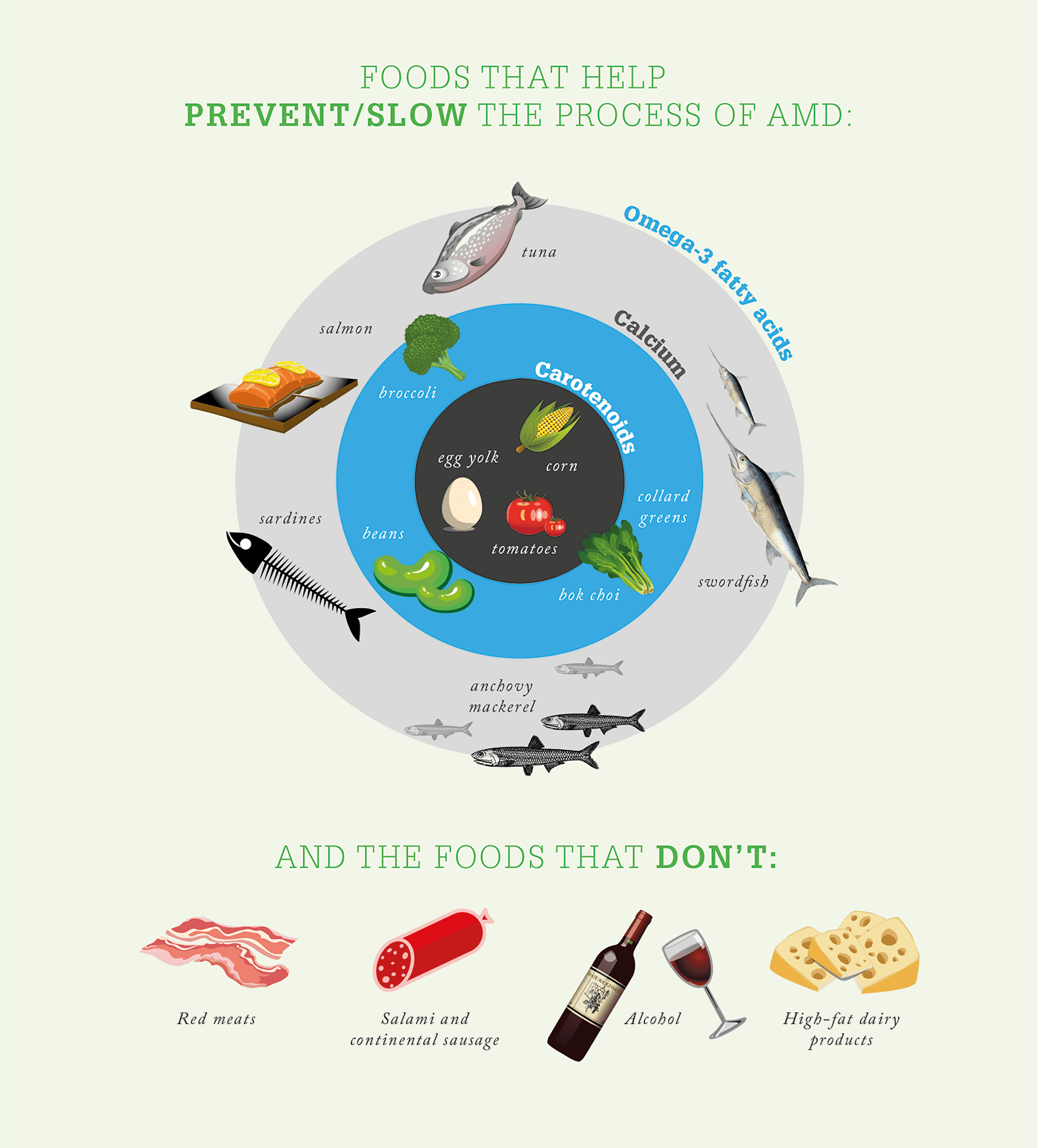
What do Shanghai and Sardinia have in common? According to science – more than you think. A team at the University of Auckland, led by Naoko Chapman, has found that Oriental and Mediterranean diets are beneficial for those at risk of AMD. Their systematic review (1) analyzed 18 studies and found that adherence to a Mediterranean diet – characterized by high consumption of fruits, vegetables, legumes, wholegrains, and nuts – decreased risk of late AMD progression. Similarly, an Oriental diet pattern – which resembles the Mediterranean diet in volume of fruit, vegetables, legumes, tomatoes, and seafood – decreased association with early and advanced AMD prevalence. In contrast, the high-glycemic Western diet pattern – categorized as having a high intake of red meat, high-fat dairy products, processed meat, fried potatoes and refined grains, as well as alcohol consumption of more than two units per day – increased association with early and advanced AMD prevalence.

“When I started this research I was looking for a simple answer,” says Chapman. “However, the evidence showed that there were multifactorial influences of diet and food intake on the incidence and progression of AMD.” The upshot? “Health professionals need to check that their own views of what constitutes a healthy diet are consistent with the evidence base, and help patients consider – what might be for some far-reaching – changes in diet”. These findings add weight (no pun intended) to existing research that has focused on modifiable risk factors, such as diet and antioxidant supplementation, to protect against AMD. And the evidence keeps mounting. Researchers at the University of Sydney, Australia, assessed the dietary intake of flavonoids in 2,856 adults aged 49 years and younger, with 2,037 followed up 15 years from baseline (2). They found each 1 standard deviation (1-SD) increase in flavonoid intake – the bioactive compounds found in tea, chocolate, red wine, fruit, and vegetables – was associated with a reduced likelihood of AMD. Furthermore, study participants that reported eating ≥1 orange – a key source of flavanones – per day were found to have a reduced risk of late AMD 15 years later compared with those who didn’t consume oranges at baseline (odds ratio: 0.39; 95% CI, 0.18–0.85).
So how many oranges are needed to prevent the onset of AMD? Apparently, as little as one a week. Bamini Gopinath, lead author on the associated study (2), says, “We were not hugely surprised that certain flavonoids were protective against the risk of AMD, but what did surprise us is that oranges, which contribute to the intake of a particular flavonoid subclass – flavanone – were so strongly protective against late AMD.” Gopinath’s study provides further evidence that flavonoids could be capable of not only reversing oxidative stress and inflammation-associated damage, but also improving vascular function and thus, possibly the clinical features of AMD. “Dietary modifications can not only slow the evolution of established AMD, but represent one of the only means of delaying the onset of the condition,” she says. “Therefore, paying attention to what we’re eating could help to minimize our risk of developing AMD.”
References
- NA Chapman, “Role of diet and food intake in age-related macular degeneration: a systematic review”, Clin Exp Ophthalmol (2018). PMID: 29927057. B Gopinath, “Dietary flavonoids and the prevalence and 15-y incidence of age-related macular degeneration”, Am J Clin Nutr (2018). PMID: 29982448.
